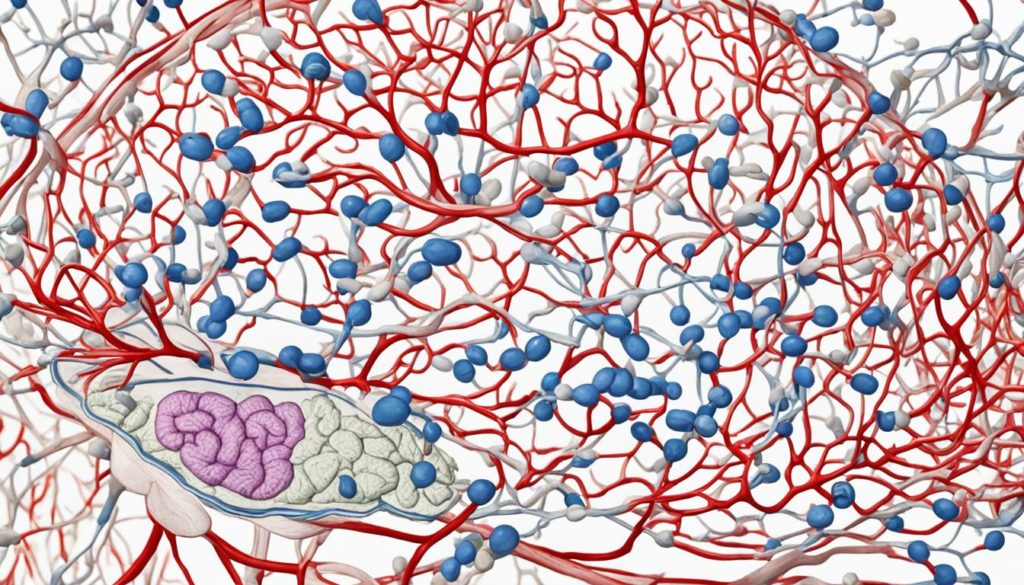Welcome to our comprehensive Contrave weight loss guide. It’s your go-to for all things naltrexone and bupropion. This medication offers a new way to help people lose weight sustainably. We’ll cover everything from its makeup to its benefits and possible side effects. This guide is perfect for healthcare professionals and those looking into weight loss options.
Contrave is a mix of naltrexone and bupropion. These drugs work together to fight obesity. With more people becoming obese, knowing about these medications is key. Our guide will explain how Contrave works, its history, and its effects on weight loss.
For those thinking about bariatric surgery, resources like this health guide are very helpful. By the end of this guide, you’ll know a lot about Contrave. This will help you decide if it’s right for your weight loss goals.
Key Takeaways
- This guide offers an in-depth exploration of Contrave, a combination of naltrexone and bupropion.
- Understand the history and development of this weight loss medication.
- Learn how Contrave effectively aids in weight loss.
- Get acquainted with recommended dosages and administration guidelines.
- Be aware of potential side effects and contraindications of Contrave.
- Discover how to obtain a prescription for Contrave.
- Read about patient experiences and testimonials concerning Contrave.
What is Contrave?
Contrave is a diet pill that helps with weight loss. It uses the effects of naltrexone and bupropion together. These two ingredients are approved by the FDA for other uses. When combined, they make a strong tool against obesity.

Overview of Naltrexon/Bupropion Combination
Naltrexone is used to help with alcohol and opioid addiction. Bupropion is for treating depression and helping people quit smoking. Together in Contrave, they work on the brain to control hunger and cravings.
Naltrexone reduces cravings by blocking opioid receptors. Bupropion makes the hypothalamus less hungry. This makes Contrave a special and effective diet pill.
History and Development
Contrave started in the early 2000s with clinical trials. These trials showed it could help with weight loss. After many studies, it got FDA approval in 2014.
This shows Contrave went through a lot of testing and checks. It’s a big step forward in weight management. The mix of naltrexone and bupropion makes it a good choice for losing weight.
How Naltrexon/Bupropion (Contrave) Works
Naltrexone and bupropion, found in Contrave, work together to help with weight loss. They target the brain to control hunger and cravings. Naltrexone, an opioid blocker, changes how the brain feels pleasure from food.
Bupropion, an antidepressant, increases dopamine and norepinephrine. These chemicals help manage mood, behavior, and hunger. By raising these levels, bupropion lessens the need to eat too much.
Studies show that Contrave is effective for weight loss. A study in the Journal of Clinical Endocrinology & Metabolism found it helped people lose more weight than a placebo. This is because Contrave affects both the brain and behavior related to eating.
“The combination of naltrexone and bupropion in Contrave provides a comprehensive approach to weight management, addressing both the neurological and psychological facets of obesity,” stated Dr. Thomas Wadden, lead researcher in the clinical study.

Knowing how Contrave works is key to understanding its benefits for losing weight. It uses both appetite control and behavior change. This approach makes Contrave a good choice for those having trouble with weight.
- Naltrexone: Opioid receptor antagonist, modulates the brain’s reward system.
- Bupropion: Boosts dopamine and norepinephrine to regulate mood and appetite.
The two parts of Contrave work together to lessen cravings and stop overeating. This helps people stick to weight loss plans. For those looking into medical weight loss options, knowing how Naltrexone/Bupropion works is very helpful.
| Component | Primary Function | Weight Loss Mechanism |
|---|---|---|
| Naltrexone | Opioid receptor antagonist | Regulates brain reward system to reduce food pleasure |
| Bupropion | Antidepressant | Increases dopamine & norepinephrine, reduces appetite |
Benefits of Using Contrave for Weight Loss
Contrave is a powerful mix of naltrexone and bupropion. It helps people manage their weight effectively. It’s great at controlling appetite, making it easier to lose weight.
Effectiveness as an Appetite Suppressant
Studies show Contrave is a strong appetite suppressant. It cuts down cravings and helps control hunger. This makes it easier to stick to a diet low in calories.
Impact on Obesity Treatment
Contrave is a key part of treating obesity. It works well with diet and exercise for better results. Unlike other options, Contrave targets appetite and metabolism at the same time. This makes it more effective for keeping weight off long-term.
| Benefit | Effect |
|---|---|
| Appetite Suppression | Reduces Cravings and Hunger |
| Weight Management | Enhances Adherence to Diet and Exercise Plans |
| Obesity Treatment | Provides Comprehensive Approach with Metabolic Regulation |
Recommended Contrave Dosage and Administration
Knowing how much Contrave to take and how to take it is key for losing weight. This guide helps patients start their Contrave journey right. It ensures they get the best results and avoid side effects.
Initial Dosage Guidelines
Starting with the right amount of Contrave is crucial for weight loss. Patients usually start with one tablet a day for the first week. Then, they can slowly increase the dose to ease stomach side effects and adjust to the medicine.
- Week 1: One tablet in the morning.
- Week 2: One tablet in the morning and one in the evening.
- Week 3: Two tablets in the morning and one in the evening.
- Week 4 and beyond: Two tablets in the morning and two in the evening.
This step-by-step approach helps the body get used to Contrave. It makes the transition smoother and helps with weight loss. Doctors recommend this method to manage early side effects well.
Maintaining Dosage for Optimal Results
After reaching the full dosage, it’s important to keep it steady. Taking two tablets twice a day keeps Contrave working best. Talking often with doctors during the weight loss journey is also key.
Sticking to the right dosage boosts weight loss and controls side effects. For more on understanding weight and obesity, check out this resource.
Potential Side Effects of Contrave
When thinking about using Contrave for weight loss, knowing the Contrave side effects is key. It helps patients be ready and talk better with their doctors.
Most people taking Contrave might feel mild to moderate side effects early on. Common side effects include:
- Nausea
- Constipation
- Headache
- Dizziness
- Insomnia
Some side effects can be serious. It’s important to know these to lessen medication risks:
- Increased blood pressure
- Seizures
- Hepatotoxicity (liver damage)
- Mood changes, such as depression or anxiety
- Allergic reactions
Here’s a look at the possible medication risks for a better understanding:
| Side Effect | Frequency (%) |
|---|---|
| Nausea | 30% |
| Constipation | 20% |
| Headache | 15% |
| Increased Blood Pressure | 5% |
| Seizures |
Managing Contrave side effects starts with catching them early and talking to a doctor. Knowing these risks helps patients make smart choices for their weight loss with Contrave.
Who Should Not Take Contrave? Exploring Contraindications
It’s important to know who should not take Contrave for safety. Certain medical conditions and drug interactions can affect how well and safely the drug works. Always talk to a doctor before starting Contrave.
Medical Conditions and Contrave
There are specific medical conditions that mean you should not use Contrave. These include:
- Pregnancy or planning to become pregnant
- Mental health conditions, such as uncontrolled depression or bipolar disorder
- Existing liver issues or severe liver disease
- History of seizures or seizure disorders
- Serious allergic reactions or skin reactions
- Uncontrolled high blood pressure
- Diabetes managed with medication
Be careful if you have vision changes or glaucoma. Avoid it if you have a history of substance misuse or high alcohol use. Stopping the drug slowly under a doctor’s watch can help manage side effects.
Drug Interactions to Watch For
It’s important to watch for drug interactions with Contrave. Some medications and substances can interact badly with it, including:
- MAO inhibitors
- Narcotics or opioid medications
- Other medications containing bupropion
- Certain antidepressants
- Antipsychotic drugs
- Medications for high blood pressure
Using these drugs with Contrave can cause serious problems. Always tell your doctor about all your medications to prevent bad interactions. For more info, check the Mayo Clinic guidelines.
Knowing and dealing with Contrave contraindications and drug interactions helps make weight loss safer and more effective.
How to Obtain a Prescription for Contrave
Getting a prescription for Contrave is a step-by-step process. It starts with a weight loss medication consultation with a healthcare provider. They check your BMI and health to see if Contrave is right for you.
Healthcare providers are key in the Contrave prescription process. Doctors like general practitioners, endocrinologists, and specialists in weight management check your health history. They make sure you’re a good fit for Contrave by looking at your current health and medicines you take.
After deciding if Contrave is right for you, your doctor will give you the medication. They might start with a small dose and change it as needed. It’s important to take the medicine as told to get the best results. Also, check if your insurance covers Contrave to avoid high costs.
| Step | Action |
|---|---|
| 1 | Schedule a weight loss medication consultation with a healthcare provider |
| 2 | Undergo health evaluations to determine suitability |
| 3 | Receive initial prescription with dosage instructions |
| 4 | Monitor progress and adjust dosage as needed |
Keep in touch with your healthcare provider during the Contrave prescription process. Regular check-ins help manage side effects and make sure the medicine is working. For more info, check out a detailed guide on getting Contrave.
Patient Experiences and Testimonials
Real-life stories from Contrave users offer key insights for those thinking about this treatment. They show both the good and the tough parts of using it.
Positive Outcomes Reported
Many people have shared their weight loss stories in Contrave patient reviews. They often talk about losing a lot of weight.
“After six months on Contrave, I lost 30 pounds. It has helped manage my cravings and keep me on track.” – Anonymous
Users also talk about getting better at making healthy choices. These stories show that Contrave does more than just help with weight loss. It can lead to better health overall.
Challenges and Considerations
Even with the good results, some users faced challenges and considerations. In Contrave patient reviews, they talk about side effects and needing regular doctor check-ups.
“While I did lose weight, I experienced some side effects like nausea. It’s important to stay in touch with your doctor throughout the process.” – Anonymous
Overall, feedback from users shows that knowing about the user challenges can help new patients. It helps them set realistic goals and get ready for their Contrave journey.
Conclusion
This detailed look at Contrave has covered its workings, benefits, and things to consider for weight loss. We learned how Contrave works with its active ingredients. This shows its potential as a helpful tool for losing weight.
But, deciding to use Contrave should be done with care and with a doctor’s advice. It’s key to look at the good points and the possible bad effects and things to avoid. Now, readers know the important details to talk about with their doctors.
At the end, getting personal health advice is crucial. Knowing all about weight loss treatments helps make a safer and more effective path to health and fitness goals. This guide aims to help you make the right choice for your own needs.
FAQ
What is Contrave?
Contrave is a weight loss pill made from two FDA-approved drugs, naltrexone and bupropion. It helps people lose weight by making them feel less hungry and crave food less.
How does Contrave work?
Contrave affects the brain. Naltrexone and bupropion together reduce hunger and cravings. This helps with both losing weight and changing habits.
What are the potential side effects of Contrave?
Side effects of Contrave include nausea, constipation, headaches, and dizziness. Serious issues like high blood pressure, heart rate increase, seizures, and liver damage are also possible. Always talk to a doctor about side effects and concerns.
What is the recommended dosage and administration for Contrave?
Start with a low dose of Contrave and increase it over time. Begin with one tablet in the morning and gradually increase as directed. Always follow your doctor’s advice for best results.
Who should not take Contrave?
Don’t take Contrave if you have high blood pressure that’s not under control, seizure disorders, eating disorders, or if you’re pregnant or breastfeeding. Avoid it if you’re taking certain medications that could interact with it. Always check with a doctor first.
How can I obtain a prescription for Contrave?
To get a Contrave prescription, see a healthcare provider for an evaluation. They’ll look at your health history and goals to see if Contrave is right for you. You may need regular check-ins to track your progress and any side effects.
What are some of the benefits of using Contrave for weight loss?
Contrave helps control hunger and aids in losing weight when used with a healthy diet and exercise. Studies show it can improve weight management for many people compared to not using medication.
Are there any drug interactions to watch for when taking Contrave?
Yes, Contrave can interact with some medications and substances. This includes MAO inhibitors, opioids, and other seizure risk medications. Always tell your doctor about all your current medications before starting Contrave.
What are some common patient experiences with Contrave?
People taking Contrave have mixed experiences. Many see significant weight loss and better control over hunger. Challenges include adjusting to side effects and keeping up with lifestyle changes. Support from healthcare providers can make the treatment more effective.


